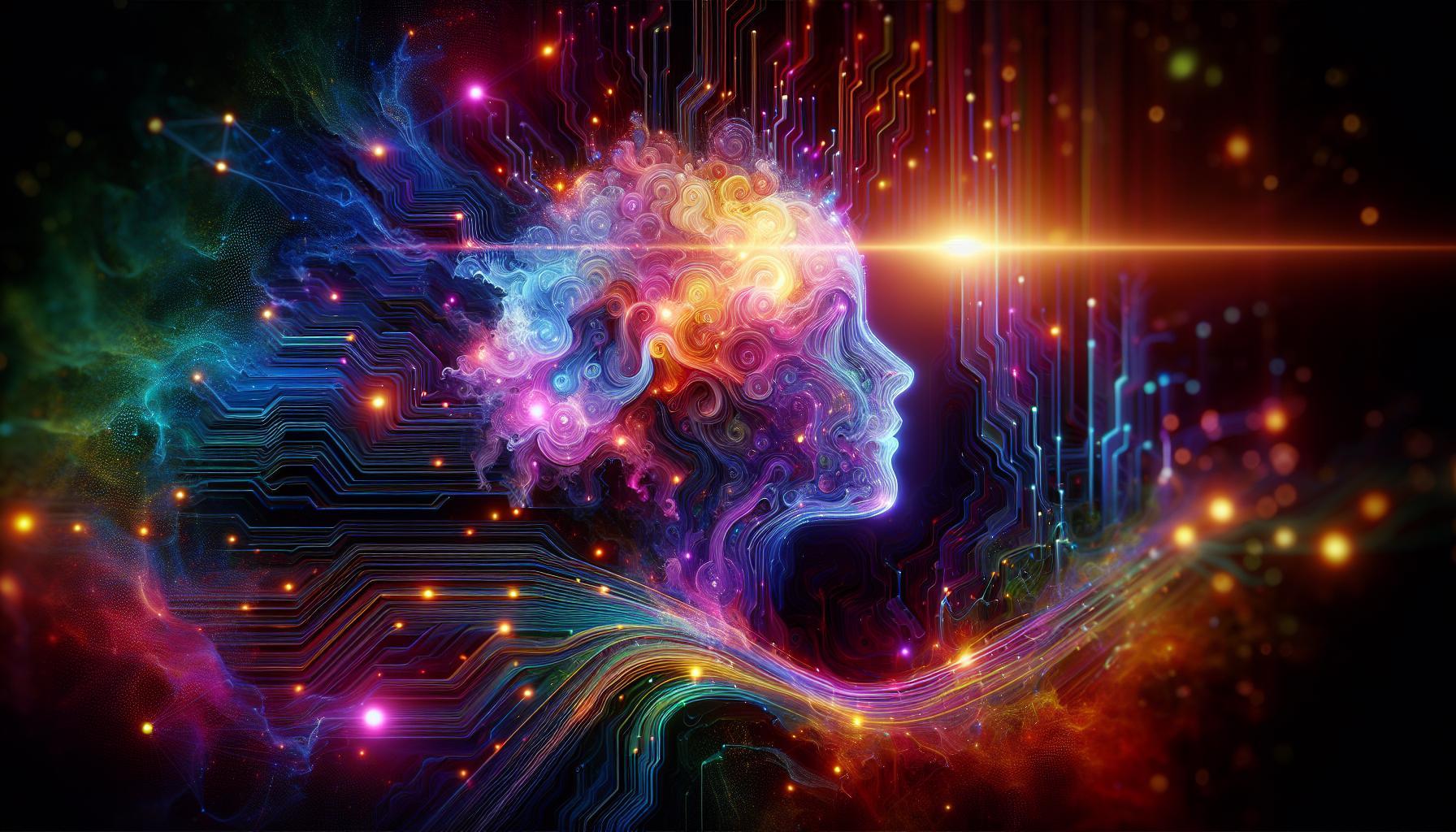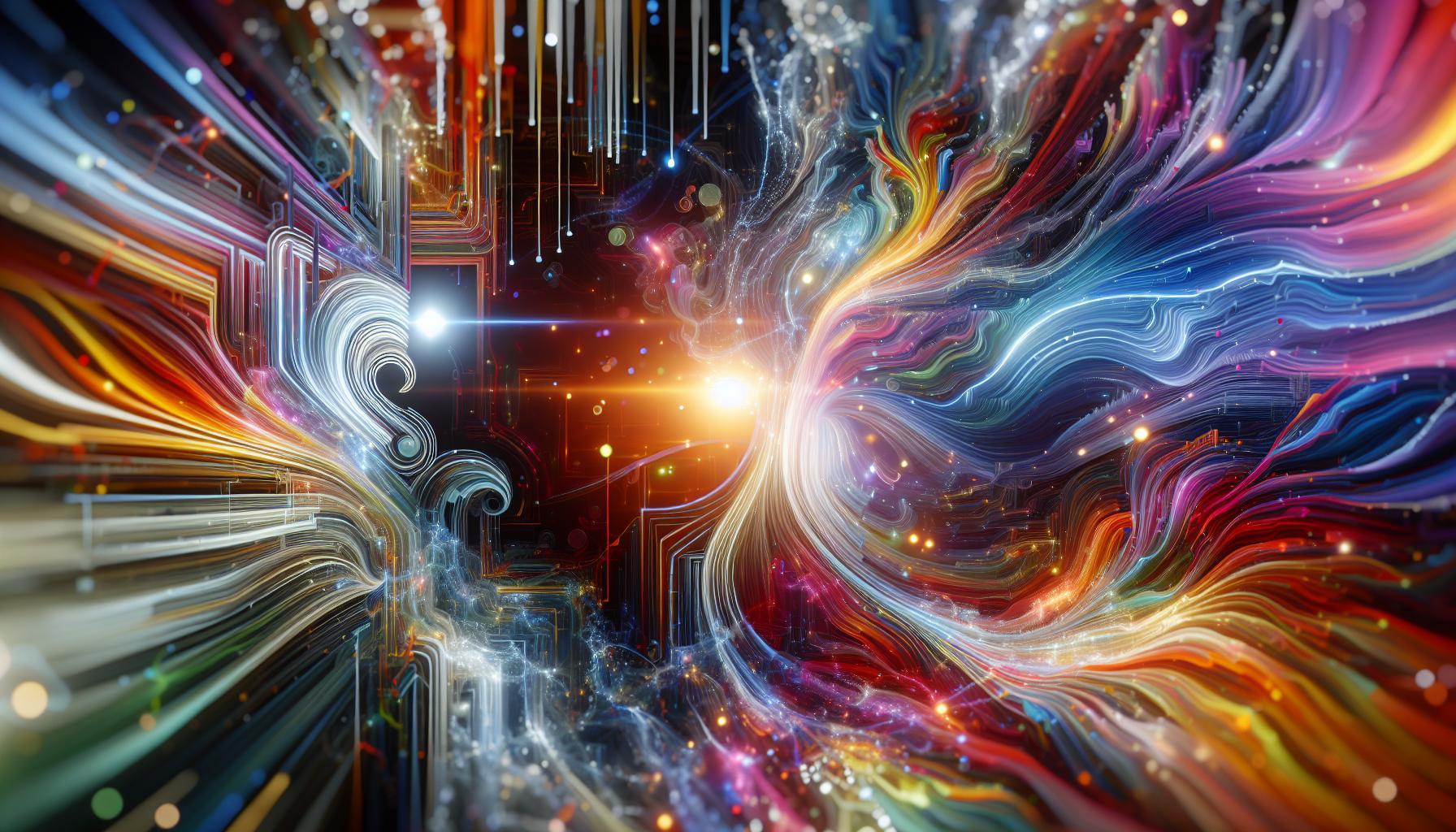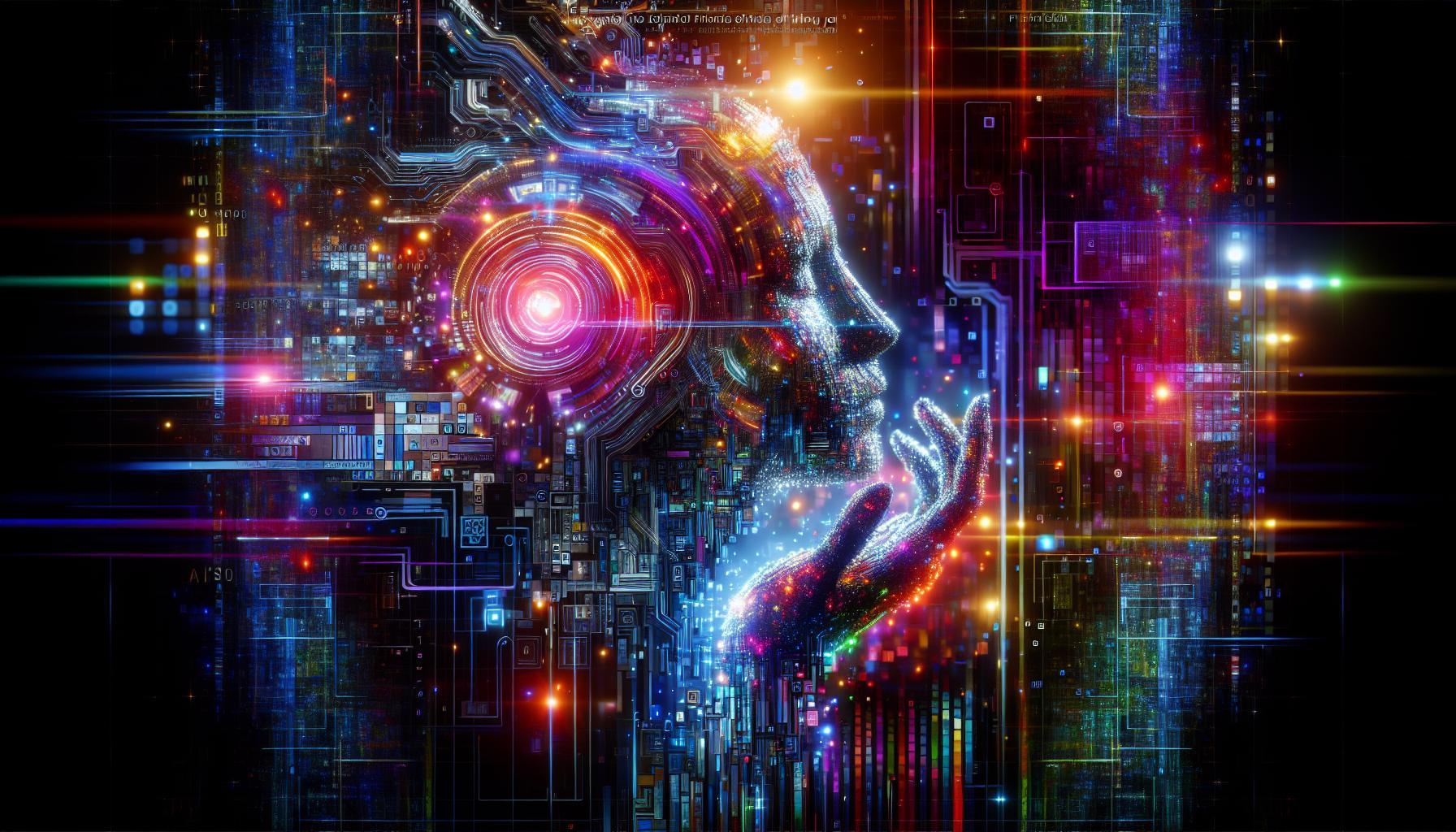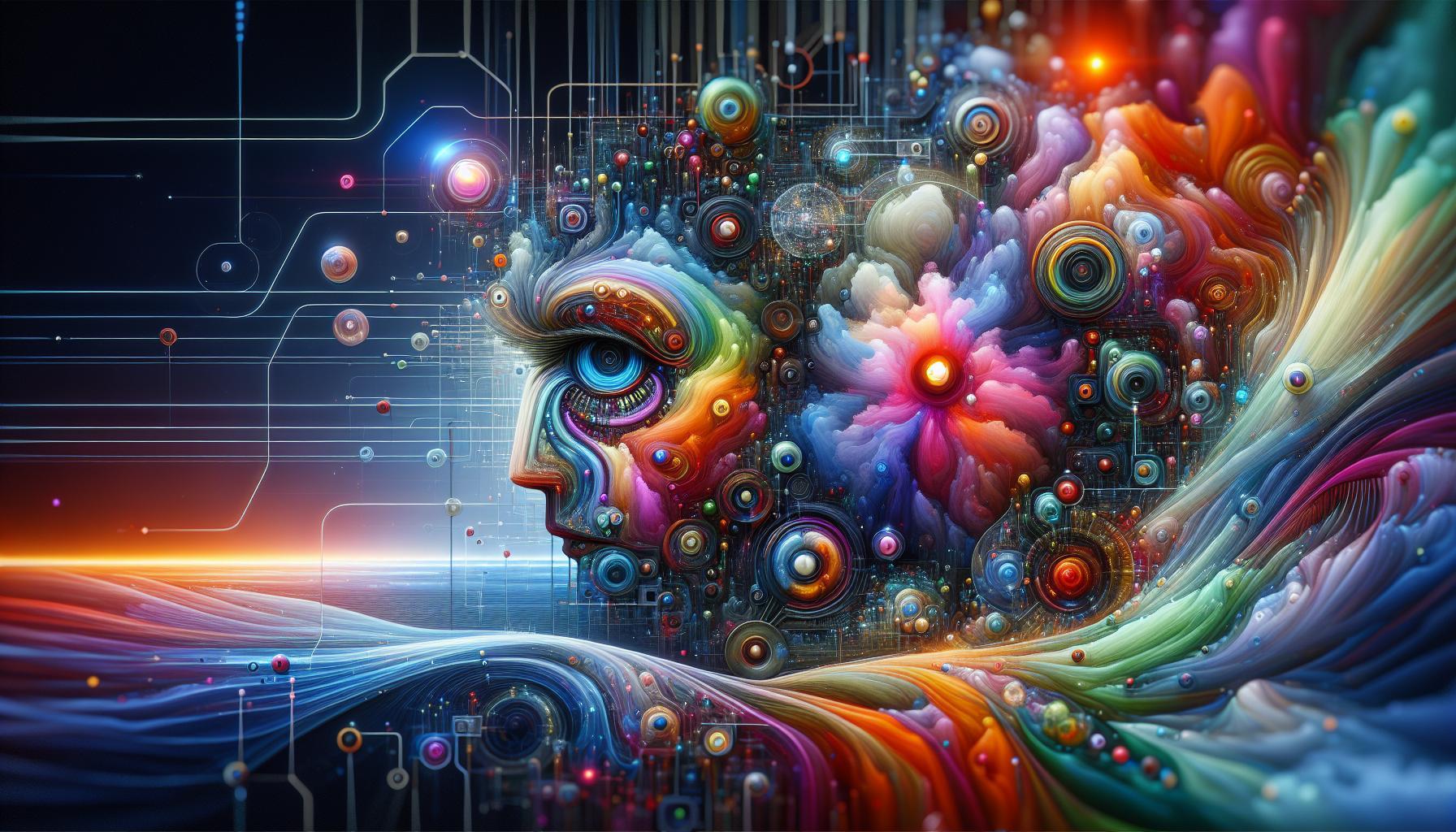In the rapidly evolving landscape of AI-powered image generation, understanding innovative tools like LyCORIS can significantly enhance creative outcomes. This advanced method, combining the strengths of existing models such as LoRA and Loha, allows artists and developers to generate high-quality visuals more efficiently. Discover how LyCORIS transforms the way we approach image synthesis in this insightful exploration.
Understanding the Basics of LyCORIS Stable Diffusion: What Sets It Apart?
In the realm of AI-driven image generation, LyCORIS stands out as a significant advancement over its predecessors. Unlike traditional models, which often require extensive data sets and training periods, LyCORIS simplifies the enhancement process by combining several technologies. By integrating features from LoRA and LoCon, this model provides a versatile framework for users to fine-tune their outputs with minimal effort and small file sizes, making it an attractive choice for those looking to elevate their creative projects.
Key Features of LyCORIS
One of the principal features setting LyCORIS apart is its flexibility. Users can integrate it with a Stable Diffusion checkpoint model, which is essential for unlocking its full potential. This compatibility allows artists and developers to manipulate parameters and generate high-quality images based on specific prompts. The model operates through a straightforward installation process, which entails downloading the necessary files and placing them in appropriate directories within the AUTOMATIC1111 Web-UI framework.
- Seamless Integration: LyCORIS works directly with existing Stable Diffusion setups, ensuring users do not need to overhaul their systems entirely.
- Efficient File Size: Compared to traditional models, LyCORIS requires less storage space, making it easier to manage and deploy.
- Enhanced Output Quality: By leveraging advanced techniques from LoRA and Locon, users can achieve more refined and distinct image creations.
Additionally, the unique concept of “Trigger Words” within LyCORIS allows for even more customization. These specific keywords enable the model to access tailored learning data, significantly influencing the generated images’ style and characteristics. Users can easily discover and apply these Trigger Words to yield results that align closely with their creative visions.
As artists and developers continue to explore the digital canvas, LyCORIS emerges as a vital tool that bridges the gap between sophisticated AI modeling and practical usability. This evolution in image generation technology not only streamlines workflows but also inspires innovative approaches to artistic expression.
The Technology Behind LyCORIS: How It Powers Your Image Generation
The emergence of LyCORIS marks a significant leap forward in the realm of AI image generation through Stable Diffusion, enhancing the capabilities of previous models like LoRA. With LyCORIS, users can now achieve a level of image detail and characterization that was previously challenging, streamlining the creative process for both artists and developers alike. This model leverages advanced training techniques to fine-tune the generation of images, allowing for greater specificity and expression in the output.
Innovative Architecture and Functionality
At its core, LyCORIS builds upon the existing frameworks established by LoRA, introducing enhancements that optimize performance. This model is designed to work seamlessly within the Stable Diffusion infrastructure, beginning with the integration into the LoRA system as of version 1.5.0. This compatibility means that implementing LyCORIS is as straightforward as loading any standard LoRA model, significantly lowering the barrier to entry for users looking to explore advanced image generation techniques [[1](https://techtactician.com/lycoris-models-in-stable-diffusion-webui-guide/)].
One of the distinguishing features of LyCORIS is its unique approach to handling “Trigger Words.” These specialized terms are essential for achieving desired results in image generation, as they guide the model in applying specific learned traits effectively. Users are encouraged to incorporate these Trigger Words into their prompts, which are accessible from the model’s download pages, thereby enhancing the accuracy of their generated visuals. For example, artists looking to create character designs can obtain specific Trigger Words to ensure the model reflects their intended styles and features [[2](https://romptn.com/article/9744)].
Practical Application and Advantages
Using LyCORIS not only amplifies the creative potential of AI-generated images but also streamlines workflows. Photographers and designers can find immense value in LyCORIS, as it allows for the generation of high-quality images with nuanced details, such as realistic human hands or intricate backgrounds, without extensive post-editing. To utilize this technology efficiently, users need to follow a simple installation guide that includes downloading the model, placing it in the appropriate directory, and using an interface like Google Colab for operation [[2](https://romptn.com/article/9744)].
In conclusion, the technology behind LyCORIS enhances AI image generation through a well-established yet innovative model that finely balances ease of use with powerful customizable features. This advancement demonstrates a considerable evolution in image generation capabilities, making it an invaluable tool for creatives in various fields. The integration of Trigger Words also opens new avenues for personalized and intricate artistic expression, setting the stage for the future of digital content creation.
Step-by-Step Guide to Getting Started with LyCORIS Stable Diffusion
Getting started with LyCORIS in Stable Diffusion can significantly enhance your AI image generation experience, enabling you to create more refined and detailed visual content. The process is straightforward, and once familiarized with the components, you will be able to harness the power of LyCORIS effectively. Below is a step-by-step guide to help you navigate this awesome tool.
Step 1: Setting Up Your Environment
Before diving into LyCORIS, ensure that you have Stable Diffusion properly installed on your system. If you haven’t set it up yet, you will need to download the necessary files and requirements from the official sources. This typically involves:
- Installing Python and the required libraries, including PyTorch.
- Downloading the Stable Diffusion model weights.
- Setting a suitable environment, preferably using a virtual environment to avoid conflicts between packages.
Step 2: Downloading LyCORIS Models
Next, you will need to obtain the LyCORIS models that are compatible with Stable Diffusion. These models can often be found in dedicated repositories or community forums focusing on AI image generation. Once downloaded, place the LyCORIS model files in the designated directory under “Extra Networks” of your Stable Diffusion setup.
Step 3: Configuring Your Model
With the models in place, you’ll want to configure Stable Diffusion to utilize them effectively. Launch the Stable Diffusion interface and follow these steps:
- Select the “Lora” tab, found under “Extra Networks.”
- From the dropdown list, choose the LyCORIS model that you have installed.
- Make sure to add a specific tag or identifier (for instance, “lycoris_model_name“) to your prompts, which indicates the model should be used during the image generation.
Step 4: Generating Images
Now that you have everything set up and configured, you are ready to start generating images! Craft detailed prompts that outline the specifics of what you wish to see in your image. Experiment with various keywords and model tags to explore the full capabilities of your LyCORIS model. Consider using a prompt structure that emphasizes the aspects you want the model to focus on, like this:
- Descriptive adjectives to enhance visuals (e.g., “vivid”, “realistic”).
- Specific themes or concepts (e.g., “futuristic cityscape”).
- Artistic styles (e.g., “in the style of [famous artist]”).
With practice, you will find the sweet spot for crafting prompts that yield stunning and high-quality images using LyCORIS in Stable Diffusion. Embrace the creative process and enjoy the exploration of this powerful AI tool in your artistic endeavors!
Enhancing Your AI Creations: Tips and Tricks for Using LyCORIS Effectively
Using cutting-edge tools like LyCORIS can significantly elevate your AI image generation, allowing you to create stunning, high-quality visuals with ease. Understanding the dynamics of LyCORIS within the framework of Stable Diffusion can unlock a treasure trove of possibilities for artists and developers alike. The flexibility and capabilities LyCORIS offers make it a vital asset for refining your digital creations.
Optimize Your Usage of LyCORIS
To get the best out of LyCORIS, consider the following strategies:
- Experiment with Parameters: Adjusting different settings such as the guidance scale or the random seed can lead to diverse outcomes. Don’t hesitate to try various configurations until you find the perfect match for your vision.
- Incorporate Custom Models: Integrate specialized models or create your own based on personal preferences or project requirements. This approach enhances the uniqueness and coherence of your outputs.
- Utilize Preprocessing Techniques: Prepare your input data effectively by resizing images or applying filters before feeding them into LyCORIS. This can greatly improve the overall quality of your generated images.
- Monitor Resource Management: Pay attention to GPU and memory usage while generating images. Efficient management can make a significant difference in performance and output quality.
Integrating LyCORIS in Creative Workflows
Incorporating LyCORIS into your creative projects can be transformative. For instance, artists looking to build a portfolio of AI-generated artworks can leverage LyCORIS to produce unique pieces tailored to thematic collections. By systematically varying parameters and iterating on designs, creators can develop a distinctive style that showcases their artistic vision while utilizing the capabilities of Stable Diffusion effectively.
| Strategy | Description |
|---|---|
| Parameter Adjustment | Modify settings to explore different image outputs. |
| Custom Models | Create or integrate tailored models for specific needs. |
| Preprocessing | Prepare images using filters and resizing for better results. |
| Efficient Resource Use | Optimize GPU and memory for enhanced performance. |
With these tips, harness the full potential of LyCORIS in your AI image generation endeavors. By embracing the various functionalities and integrating them into your workflows, you can achieve remarkable, professional-level results that stand out in any portfolio.
Real-World Applications of LyCORIS Stable Diffusion: From Art to Industry
The transformative potential of LyCORIS Stable Diffusion is revolutionizing how various industries approach image generation and customization. This innovative technology allows artists and businesses to create visually stunning images tailored to their specific needs, enhancing both creative expression and operational efficiency. By leveraging LyCORIS, users can achieve a level of detail and personalization that was previously unattainable with standard AI image generators.
Creative Industries: Elevating Artwork and Design
In the realm of art and design, the use of LyCORIS models offers unparalleled flexibility and customization. Artists can refine their creations by integrating specific styles or attributes, allowing for a more profound connection with their audience. Graphic designers, for instance, utilize LyCORIS to generate unique visual content for marketing campaigns or client projects. The ability to fine-tune models with minimal adjustments means that creating a new color palette or style can be as simple as tweaking parameters rather than starting from scratch.
- Custom Portraits: Artists can generate specific likenesses or styles, greatly benefiting from the creative control provided by LyCORIS.
- Enhanced Advertising: Designers can craft eye-catching visuals that align closely with brand identities, leading to improved engagement rates.
- Concept Art: Game developers can produce concept art that closely matches their vision, streamlining the iterative process.
Business Applications: Streamlining Operations
Beyond artistic pursuits, LyCORIS Stable Diffusion is making waves in various industries by optimizing operational workflows. Businesses in sectors such as fashion, real estate, and advertising harness the power of AI to create product images, marketing materials, and even virtual environments. For example, fashion retailers can utilize LyCORIS to generate on-model photos of clothing items without the need for extensive photoshoots, saving time and resources while responding swiftly to market trends.
| Industry | Application | Benefits |
|---|---|---|
| Fashion | Virtual clothing displays | Reduced photoshoot costs, timely updates to catalogues |
| Real Estate | Property visualizations | Enhanced buyer engagement through realistic imagery |
| Advertising | Targeted ad visuals | Increased relevance and improved conversion rates |
In summary, as industries increasingly adopt this advanced technology, the capabilities of LyCORIS Stable Diffusion continue to expand, allowing for innovative solutions that drive creative and operational excellence. Whether enhancing digital artwork or redefining how businesses present their products, LyCORIS is a game-changer in the landscape of AI image generation.
Troubleshooting Common Issues in LyCORIS Image Generation
In the world of AI image generation, especially when utilizing tools like LyCORIS, encountering issues during the creative process is not uncommon. As you delve into enhancing your projects with what LyCORIS offers, it’s crucial to be prepared for potential hiccups. Given the innovative approach that LyCORIS takes by utilizing parameter-efficient fine-tuning algorithms, understanding how to troubleshoot common issues can dramatically streamline your experience.
Identifying Common Problems
When using LyCORIS models, several typical challenges may arise. Here are some frequent issues that users encounter:
- Model Compatibility: Ensure that your version of the Stable Diffusion framework supports LyCORIS. Check for updates that might enhance compatibility, especially if you are using a1111sd-webui.
- Image Quality Issues: If you notice artifacts or unexpected results in generated images, consider reviewing your model training settings and input quality. It may be necessary to retrain models with refined parameters.
- Performance Lags: For users working with higher resolutions or complex images, system resource limitations may lead to performance issues. Evaluate your hardware specifications to ensure optimal results.
- Error Messages: Pay attention to specific error codes if generated images fail. Often, these messages can direct you to the root cause, whether it’s a missing file or incompatible configuration.
Effective Solutions
To address the common issues encountered with LyCORIS, several practical solutions can be implemented:
- Updating Software: Regularly check for updates to both your LyCORIS implementations and the Stable Diffusion framework. Keeping everything current can resolve many bugs and compatibility issues.
- Adjusting Parameters: Experiment with different fine-tuning parameters. Slight modifications can yield significant differences in output quality.
- Utilizing Community Support: Engage with user communities and forums. Here, you can share experiences and discover solutions that other users have successfully applied.
- Consult Documentation: Review the official documentation for LyCORIS and related frameworks for detailed troubleshooting guides that can help fix specific problems.
By adopting these troubleshooting strategies, you can significantly enhance your workflow and enjoyment when using LyCORIS in your AI image generation projects. Implementing these practices ensures a smoother process, allowing you to focus more on your creative vision and less on technical setbacks.
Future Trends in AI Image Generation: What’s Next for LyCORIS?
With artificial intelligence rapidly evolving, the future of image generation is set to become increasingly sophisticated, particularly with advancements like LyCORIS in the Stable Diffusion landscape. This innovative technology is poised not only to enhance the quality of AI-generated images but also to streamline workflows through its parameter-efficient fine-tuning capabilities. As image generators become widely adopted across various industries-from entertainment to marketing-understanding the potential of LyCORIS will be crucial for creatives and developers alike.
Enhanced Customization and User Control
One significant trend on the horizon is the move towards greater customization and user control in AI image generation. With LyCORIS enabling fine-tuning through algorithms like LoCon, LoHa, and LoKR, users will be empowered to produce highly tailored images that align more closely with specific themes or brand identities. This level of customization means that artists and marketers can create distinct visuals that stand out in increasingly saturated markets. As platforms adopt these advancements, we might witness the rise of user-friendly interfaces that further abstract complex functionalities, making it accessible to non-technical users.
Integration with Other AI Technologies
Another promising trend involves the integration of LyCORIS with other AI technologies, such as natural language processing and 3D modeling. By leveraging cross-disciplinary applications, we could see a future where textual descriptions effortlessly transform into high-fidelity images, and dynamic, interactive visual content is created almost instantaneously. Such integration facilitates storytelling in ways that have previously remained the realm of imagination. For instance, a creative director could input a scene’s description and receive a series of unique visual interpretations that can be further refined using LyCORIS’ capabilities.
Sustainability and Efficiency
Sustainability will also play a vital role in shaping the future of AI image generation. As businesses grow more conscious of their environmental footprint, technologies like LyCORIS, which promotes efficient use of parameters and computational resources, will become invaluable. Optimizing image generation to reduce energy consumption and speed up processing times can significantly impact the overall sustainability of digital art production. This trend aligns with the growing movement toward eco-friendly practices in technology and design, setting a benchmark for future innovations in the field.
In conclusion, the future of LyCORIS in AI image generation appears bright, with numerous opportunities for improved customization, integration, and sustainability. By continuously adapting to these trends, practitioners in creative industries will find new pathways for innovation, enabling them to harness the full potential of technologies that redefine image creation. Embracing these advancements ensures that professionals remain ahead in a rapidly evolving digital landscape, turning concepts into captivating visual narratives.
Exploring Creative Possibilities: Inspiring Projects Using LyCORIS Stable Diffusion
Harnessing the power of LyCORIS models within Stable Diffusion opens up a realm of creative possibilities that continues to inspire artists and developers alike. These models provide a unique approach to image generation, allowing users to make subtle yet impactful adjustments to their outputs using minimal additional data. As a result, innovative projects are emerging that showcase the versatility and effectiveness of LyCORIS in enhancing AI-generated imagery.
One of the most exciting applications involves integrating LyCORIS models into various artistic workflows. Artists have begun to experiment with LyCORIS by overlaying different styles or themes on existing images, effectively customizing the aesthetics without losing the integrity of the original image. For example, a graphic designer might start with a base landscape and use a LyCORIS model trained on specific artistic styles to generate new landscapes that evoke emotions or themes relevant to their projects. This process not only saves time but also fosters creativity by allowing for rapid experimentation with visual styles.
In addition to individual artists, collaborative projects have also flourished, leveraging the capabilities of LyCORIS models. For instance, teams can work on narrative-driven games, using LyCORIS to create distinct environments and character designs that reinforce storytelling elements. Developers can tweak elements like color schemes or character details through quick iterations, leading to polished results that resonate with players. This flexibility is especially appealing in industries where visual appeal directly influences audience engagement.
The educational landscape is another area where LyCORIS models are making an impact. Educators are incorporating these tools into coursework on digital art and AI technologies, allowing students to visualize concepts and apply them in real-time. With access to LyCORIS, learners can explore the boundaries of creativity and technology, bridging gaps between traditional art practices and modern digital techniques. This hands-on experience not only enhances their skills but also prepares them for future careers in the ever-evolving field of digital arts.
By utilizing LyCORIS in projects-whether for personal expression, commercial applications, or educational pursuits-users can significantly enhance their AI image generation processes. The flexibility and depth offered by these models not only enrich artistic expression but also push the boundaries of what’s possible in digital creation.
Q&A
What Is LyCORIS in Stable Diffusion?
LyCORIS is a method used in Stable Diffusion models to enhance AI image generation. It allows for better customization and improved image quality by fine-tuning parameters in the model, resulting in more detailed and accurate outputs from text prompts.
By implementing LyCORIS, users can achieve specific artistic styles or detailed images that align closely with their vision. This advanced approach is particularly beneficial for artists and developers looking to create unique visuals.
How to Use LyCORIS with Stable Diffusion?
To use LyCORIS in Stable Diffusion, select the “Lora” tab under “Extra Networks” in the software, choose your model, and include it in your text prompt. This integration enhances the image generation process significantly.
This method allows users to tap into the rich capabilities of AI, producing high-quality images that integrate various features. Accessing these tools empowers you to make visually stunning creations with relative ease.
Why Use LyCORIS in Your AI Image Generation?
Using LyCORIS in AI image generation is essential for maximizing the quality and diversity of generated images. It provides flexibility in adjusting the model based on specific needs, leading to personalized outcomes.
This capability is crucial for artists, marketers, and developers who aim for tailored visuals that stand out. By implementing specialized LyCORIS models, the overall fidelity of images improves, ensuring they resonate more with intended audiences.
Can I Customize LyCORIS Models?
Yes, you can customize LyCORIS models to suit your specific needs in image generation. Adjusting parameters allows for a wide range of artistic styles and outputs, enhancing creativity.
Customization also enables users to experiment with different inputs, refining their approaches to generate unique visuals that fit particular concepts or narratives. This flexibility opens a world of possibilities in visual storytelling.
What Are the Benefits of Using LyCORIS?
The benefits of using LyCORIS include improved image quality, greater customization, and the ability to control artistic styles. These features help users create images that are visually appealing and contextually relevant.
Integrating LyCORIS into your workflow allows both beginners and experts to leverage advanced AI techniques, expanding their toolkit for creative projects. This can lead to innovative applications across various fields, from digital art to marketing.
How Does LyCORIS Improve Stable Diffusion Models?
LyCORIS enhances Stable Diffusion by enabling fine-tuning of the model, optimizing it for specific tasks or desired outputs. This directly results in higher fidelity and more relevant images based on user input.
By employing these techniques, creators can explore intricate details and varied artistic expressions, making the most of AI in their projects. This improvement reinforces the model’s adaptability and responsiveness in producing tailored visual content.
Concluding Remarks
In summary, LyCORIS represents a significant evolution in the realm of AI image generation, combining the benefits of LoRA and other techniques to enhance the capabilities of Stable Diffusion models. By enabling users to make nuanced adjustments with minimal file sizes, LyCORIS opens up exciting new possibilities for creating detailed and customized images.
Whether you’re a beginner or an experienced user, understanding how to implement and utilize LyCORIS models can dramatically improve your creative projects. With straightforward installation steps and adaptable training methods available, there’s a wealth of exploration to be had. Experiment with these models to see firsthand how they can elevate your visual art and storytelling.
We encourage you to dive deeper into the world of LyCORIS. Try different techniques, explore various implementations, and unleash your creativity. The tools for innovation in AI-generated imagery are at your fingertips-take the leap and start crafting stunning visuals today!





